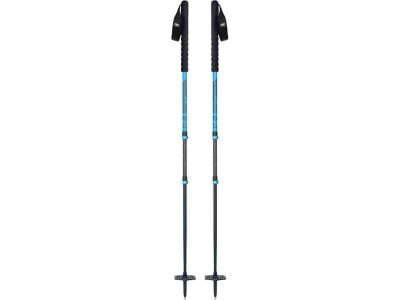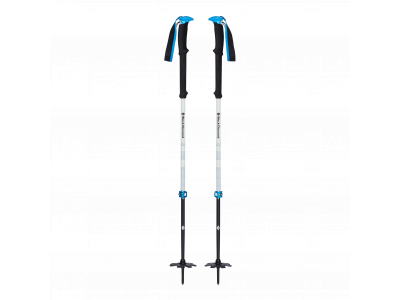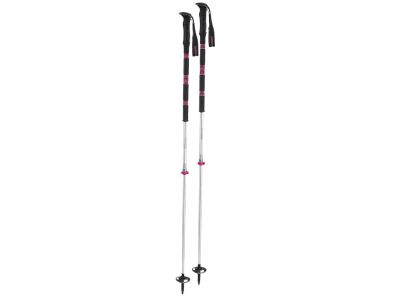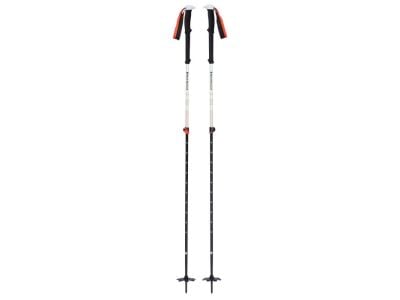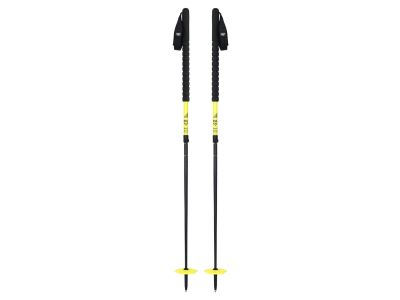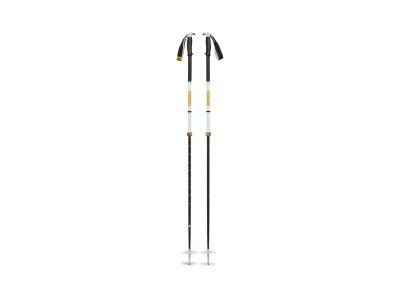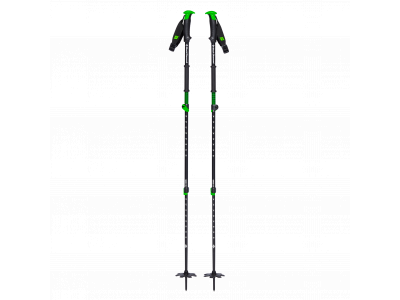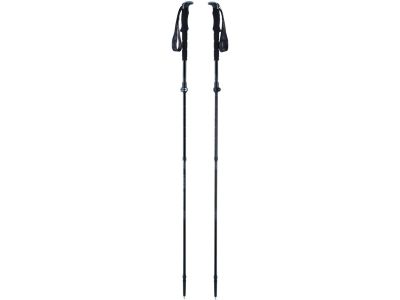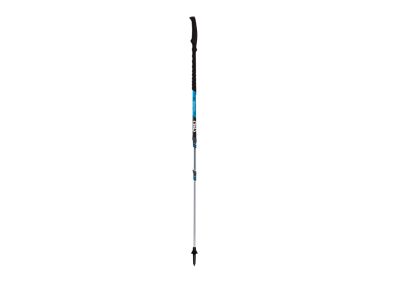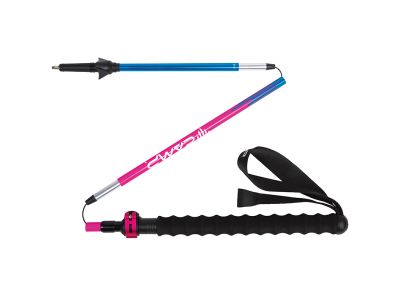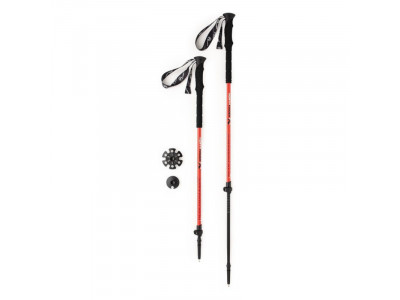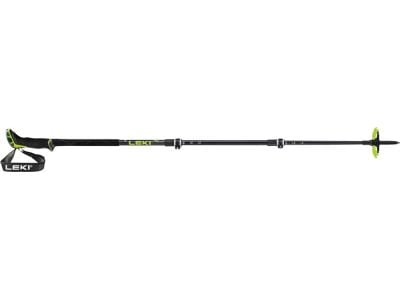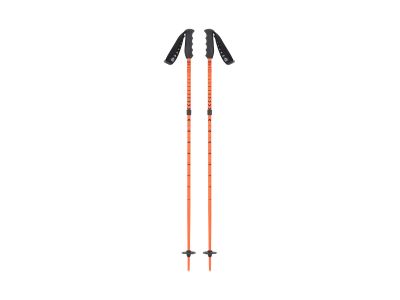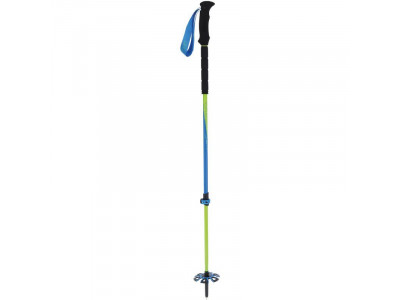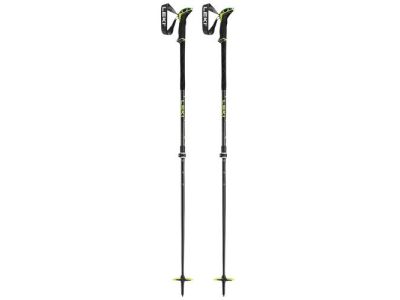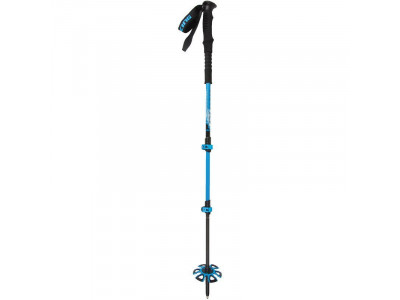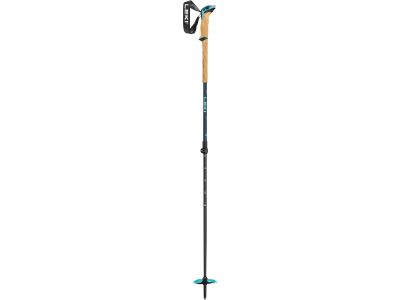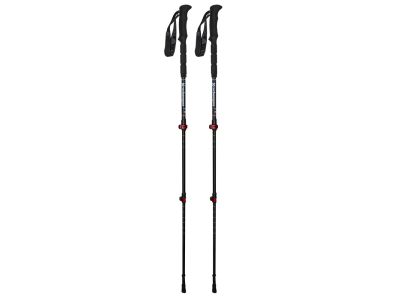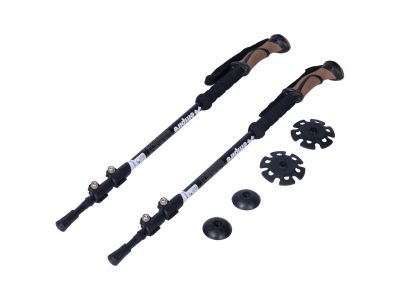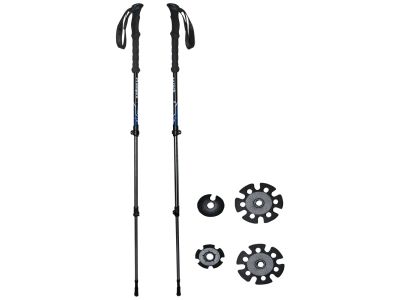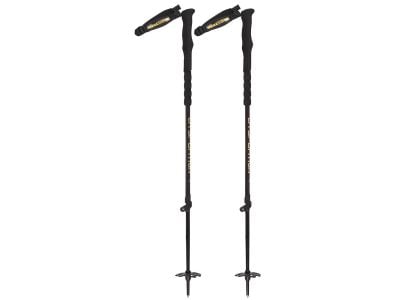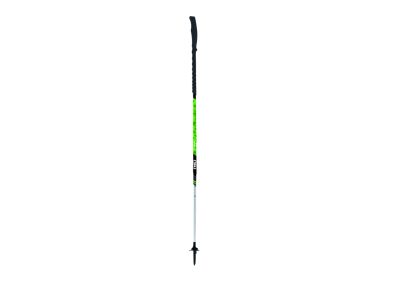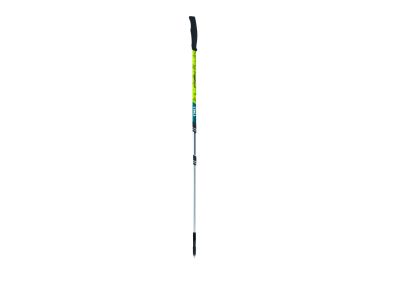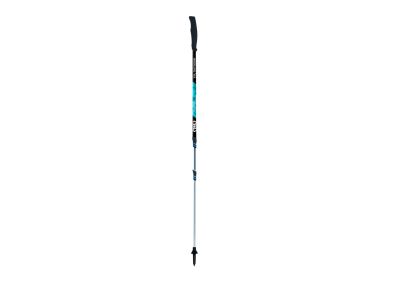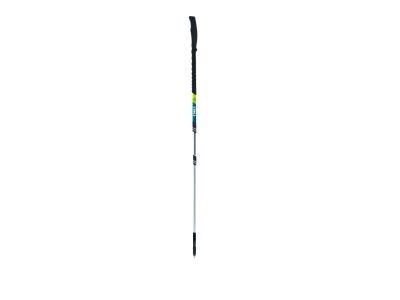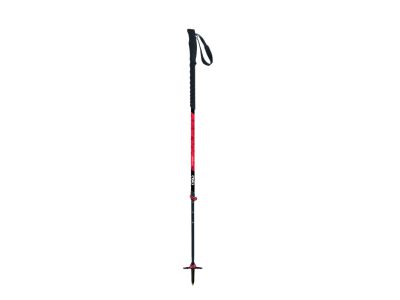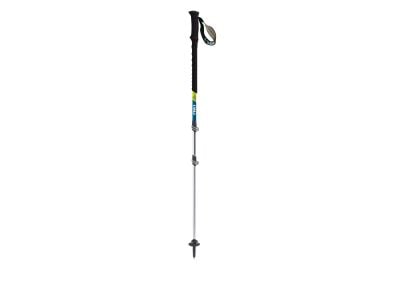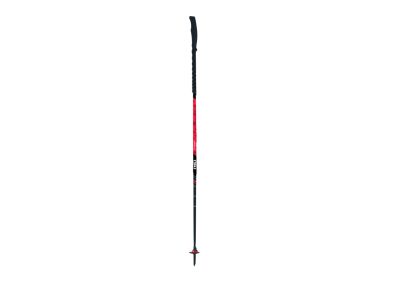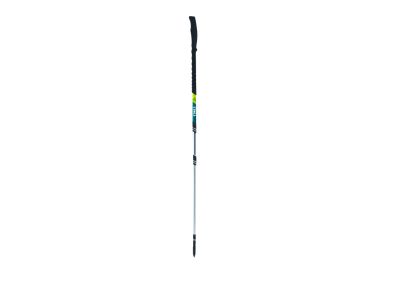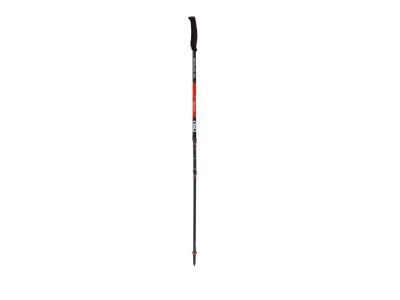Telescopic poles are essential equipment for back country skiers and backpackers. These poles are specifically designed to enhance performance and provide stability during skimo tours in a variety of terrains.
One of the key features of telescopic poles is their adjustable length. Using a simple twist mechanism or locking system, the poles can be extended or retracted to suit the height of the skier and the demands of the terrain. This adjustability allows for versatility and ensures that the poles can be tailored to provide optimal support and balance when climbing or descending.
How to choose telescopic poles?
When choosing telescopic ski poles, there are several factors to consider, ensuring you choose the right poles for your needs. Here are a few key factors:
- Length: Telescopic poles offer adjustable lengths, so consider the range of lengths available and make sure they can be adjusted to suit your height and skiing style. Longer poles provide more stability during descents, while shorter poles are more suitable for ascents.
- Material: Telescopic poles are usually made of aluminium or carbon fibre. Aluminium poles are durable and cost-effective, while carbon fibre poles are lighter and better at absorbing vibrations. Consider your needs and budget when deciding on a material.
- Grip: Look for ergonomic handles that fit comfortably in your hands and provide a secure grip. Some handles have additional padding or shaping for added comfort. Also consider the material and texture of the grip, as it should provide good traction even in wet or icy conditions.
- Strap: The wrist strap should be adjustable and comfortable. It should allow you to easily secure the poles to your wrist while allowing for quick release when needed. Make sure the straps are durable and can withstand regular use.
- Locking mechanism: Consider the locking mechanism used to secure the poles at the desired length. There are various mechanisms available, such as twist locks or lever locks. Make sure the mechanism is easy to operate, safe, and reliable.
- Basket size: Consider the size of the baskets. Larger baskets are better for deep snow, providing better buoyancy and preventing the poles from sinking too much. Smaller baskets are better for groomed or hard snow.
- Weight: Lighter poles can reduce fatigue during long hikes. However, keep in mind that lighter poles can come at the expense of durability and stability.
- Price: Set a budget and consider the price range of telescopic poles. Compare different models and brands to find a balance between quality and affordability.
Are telescopic poles suitable for all types of skiing?
Telescopic poles are versatile and can be used for a variety of skiing activities, including back country skiing, ski mountaineering, and even resort skiing. However, if you primarily engage in a specific type of skiing, such as racing or freestyle, you may want to consider poles specifically designed for those disciplines. Telescopic poles are especially beneficial for back country skiing and hiking due to their adjustable length, lightweight construction, and large baskets for better use in deep snow.
Are carbon or aluminium poles better?
Choosing between carbon fibre and aluminium telescoping poles comes down to personal preference, budget, and desired performance. Carbon fibre poles are generally lighter, absorb vibrations better, and provide a more comfortable feel. However, they tend to be more expensive. Aluminium poles are more durable and cost-effective, making them a popular choice for many skiers. Consider your priorities and budget to determine which material is best for you.
Can I replace the baskets on the telescopic poles?
Yes, in most cases, the baskets on telescopic poles can be replaced. Over time, baskets can wear or break, and it is important to replace them to maintain optimal performance.
Can I use telescopic poles for hiking or trekking?
Telescopic poles designed for skiing can also be used for hiking or trekking. Thanks to their adjustable length and robust construction, they are suitable for a variety of outdoor activities. However, keep in mind that specific trekking poles may have additional features or constructions that are specifically designed for these activities. If you plan to use the poles primarily for hiking or trekking, it may be worth considering poles designed specifically for these purposes.

